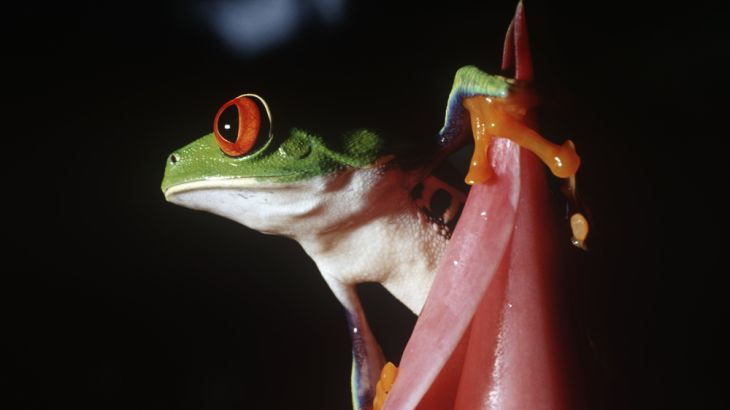
Costa Rica: Journey to the jungle
We take the pulse of Costa Rica’s rainforest to find out how global warming affects the ‘lungs of the planet’.
One of the most beautiful and fragile places on the planet is under threat.
Tropical rainforests are sheltering more than half of the world’s plants and animal species. And although rainforests comprise a small percentage of the earth, they are a critical component of how we function.
Keep reading
list of 4 itemsHong Kong’s first monkey virus case – what do we know about the B virus?
Why will low birthrate in Europe trigger ‘Staggering social change’?
The Max Planck Society must end its unconditional support for Israel
“I love to think of the Amazon, the rainforest, as the lungs of the planet,” says Joshua Fisher, a scientist at NASA’s Jet Propulsion Laboratory.
A recent study by Fisher and fellow JPL researcher David Schimel revealed that tropical rainforests absorb 1.4 billion metric tonnes of carbon dioxide out of a total global absorption of 2.5 billion. The report also states that forests and other land vegetation currently remove up to 30 percent of human carbon dioxide emissions from the atmosphere during photosynthesis. If the rate of absorption were to slow down, the rate of global warming would speed up in return.
“What our study shows is that the tropics really dominate the metabolism of our planet. They dominate the removal of fossil fuels, CO2, from the atmosphere. They are really cleaning up the planet … The rate of [global] warming would be approximately 25 percent faster. They are helping to regulate our climate,” says Schimel.
Despite an overall decline in the destruction of rainforests over the past decade, it is still a story of paradise lost. Farming, construction, pollution and drought are just some of the threats to these incredibly complex ecosystems.
So, what is the state of the rainforests? How do climate change and global warming affect the world’s rainforests and their species? Deforestation is banned, but how extensive is the damage? How important are rainforests for the planet? And how can the rainforests be protected?
The Costa Rican rainforest is one of the most ecologically diverse in the world, and also one of the most protected.
TechKnow‘s Phil Torres went hiking around Costa Rica’s Bijagual Reserve to take the pulse of the rainforest and to look at reforestation, biodiversity and global warming’s impact on the rainforest.
In the second part of TechKnow, Phil Torres went to Ohio to look at the fine art of recycling and how civil engineering professor Guy Riefler and artist John Sabraw came up with an innovative solution to toxic waste that bridges art and science.